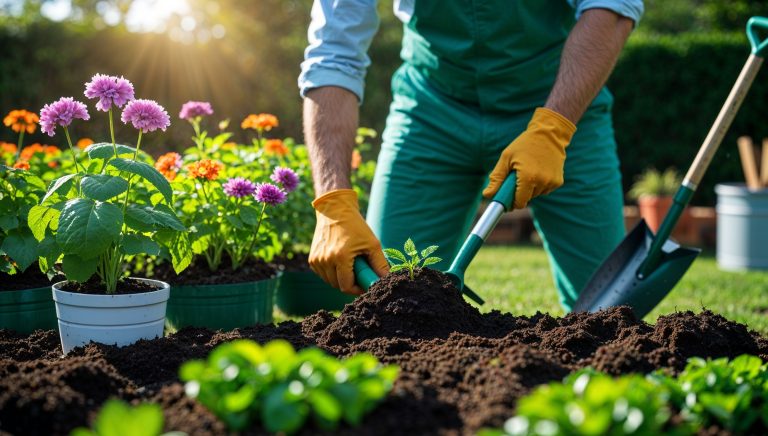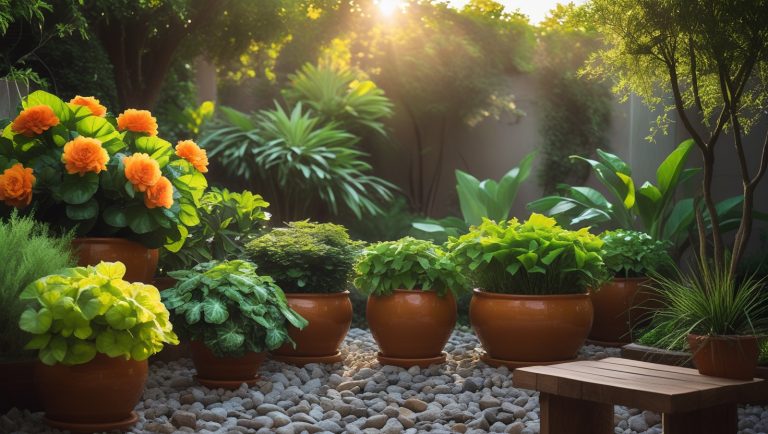

Gardening is more than just a hobby—it’s an opportunity to connect with nature, improve your mental well-being, and create a beautiful, serene space in your home. Whether you have a spacious backyard, a small balcony, or even just a windowsill, gardening can bring the outdoors inside and transform your environment. If you’re a beginner, you might feel intimidated by the thought of starting your own garden, but don’t worry—gardening is a journey, and like any new skill, it requires patience, practice, and learning along the way.
In this article, we will explore everything you need to know to start your gardening journey at home. From planning your garden and understanding your space to choosing the right plants and maintaining them, these tips will help you create a thriving garden that will bring joy and tranquility to your home.
The first step to successful gardening is to create a plan. While it may seem tempting to dive in and start planting right away, planning is essential to ensure that your garden will thrive. A well-thought-out plan will save you time and effort in the long run and will help you avoid common mistakes that beginners often make.
Ask yourself the following questions:
Once you have a better idea of your goals and available resources, it will be easier to design your garden layout and select the right plants.
Before you start planting, it’s important to understand the environment where your plants will live. Whether you are gardening indoors or outdoors, assessing your space will help you make informed decisions about which plants will thrive there.
The amount of sunlight your garden receives plays a crucial role in plant health. Different plants have different light requirements, so understanding the light conditions in your garden is essential.
Be sure to observe your garden throughout the day to track how much light it receives in different spots. This will help you decide where to plant each type of plant.
Your local climate plays a significant role in determining which plants will succeed in your garden. If you live in a region with cold winters, certain plants, such as tropical varieties, may not be suitable for outdoor planting. On the other hand, if you live in a hot and dry climate, you’ll want to select drought-tolerant plants that thrive in such conditions.
It’s also important to understand the growing season in your area. Some plants need long periods of warmth to grow, while others thrive in cooler temperatures. If you’re unsure, many garden centers and nurseries offer helpful advice based on your region.
For indoor gardens, the temperature inside your home is typically stable, but some plants, such as tropical varieties, will need extra humidity or warmth. Consider using humidifiers for indoor plants that need extra moisture.
Now that you’ve understood your space, it’s time to select the right plants for your garden. For beginners, it’s best to start with plants that are easy to grow and care for. Some plants are more forgiving of mistakes and environmental conditions, making them perfect for first-time gardeners.
Make sure to choose plants that suit your garden’s light conditions and climate. As you become more confident in your gardening skills, you can experiment with more challenging plants.
The soil in which your plants grow is crucial to their health and development. Good soil provides nutrients, supports root growth, and helps retain moisture.
When selecting containers, ensure that they have drainage holes. Excess water that collects in the bottom of the container can cause root rot, so proper drainage is crucial. Choose containers that are large enough to accommodate the plant’s root system and provide enough space for it to grow.
Proper watering is one of the most important aspects of successful gardening. Overwatering or underwatering can cause stress to your plants and hinder their growth. To ensure your plants are getting the right amount of water, consider the following tips:
Fertilization is essential for healthy plant growth, especially during the growing season. Plants require a variety of nutrients to grow, including nitrogen, phosphorus, and potassium. Fertilizers provide these nutrients, helping plants thrive.
Fertilize your plants during the growing season—spring and summer—and reduce the amount of fertilizer during the fall and winter, when most plants are dormant.
To keep your plants healthy and encourage new growth, regular maintenance is essential. Pruning is one of the best ways to keep your plants looking their best and ensure they grow properly.
Gardening is a therapeutic and rewarding hobby that offers many benefits. It’s important to enjoy the process rather than focusing solely on the end result. Gardening allows you to slow down, connect with nature, and practice mindfulness as you nurture your plants.
Don’t be discouraged by mistakes or challenges—gardening is all about learning and experimenting. Over time, you’ll develop a deeper understanding of your plants’ needs, and your garden will flourish in ways you never imagined.
Starting a garden at home is an incredibly rewarding experience that can transform your space and improve your well-being. By planning your garden, understanding your space, choosing the right plants, and following proper care techniques, you can create a beautiful, thriving garden that brings you joy throughout the year.
Gardening is a journey, and it doesn’t have to be perfect right away. Take your time, enjoy the process, and watch your garden grow. With each step, you’ll gain more knowledge and confidence, turning your home into a peaceful, green sanctuary.